- Home
- Gerald Durrell
Golden Bats & Pink Pigeons Page 2
Golden Bats & Pink Pigeons Read online
Page 2
‘Now,’ said Dave, as he led us up to the first aviary, ‘now you are going to see one of the rarest birds in the world and one of the most goddarned beautiful too, and tame as a newly-born guinea pig. They were from the start. There!’
In the aviary sat three undeniably handsome pigeons. They were much larger than I had imagined and more streamlined, but this was due to their extraordinary long tails and necks. With their reddish-brown plumage and the delicate cyclamen-pink blush on their necks and breasts, they were large and very elegant members of the family. They had small heads perched on long, soigné necks, which gave them a look rather like a feathered antelope. As we approached the wire, they peered at us in the mildly interested, oafish way that pigeons have and then, dismissing us from what passed for their minds, they fell into a doze. I felt that even though their rarity made them of great biological and avicultural importance, one could hardly say that they had personalities that inspired one.
‘They look rather like a wood pigeon that has been dyed,’ I said, unthinkingly, and Dave gave me a wounded look.
‘There’s only thirty-three of them left,’ he said, as though this made them much more desirable and beautiful than if there had been 25 million.
We moved on to the aviary that contained a pair of Mauritian kestrels. They were small, compact birds with wild, fierce-looking eyes, but here again, they bore such a close resemblance to the European and North American kestrels that only an expert could tell them apart, and the uninitiated could well be pardoned for wondering what all the fuss was about. Was I, I wondered, being unfair to the Mauritian kestrel just because it closely resembled a bird that I had been familiar with from childhood, had kept and flown at sparrows? Did this make me less anxious to enthuse over it than if it had been something as bizarre as a Dodo? After mature reflection for at least thirty seconds, I decided that this was not the case. Nothing could be more boringly like a guinea pig than a West Indian hutia, a rodent to which I was passionately attached and whose future was as black as the kestrels’. No, it was simply that I was more mammal than bird-orientated, and so a small, dull mammal appealed to me more than a small, dull hawk. I decided that this was remiss of me and made a vow to make amends in the future. Dave, meanwhile, was regaling me with the fate of a pair of kestrels that had been foolish enough to nest on a cliff face that was not totally inaccessible.
‘Monkeys,’ said Dave, dramatically, ‘the forest’s full of the damn things. Big as a six-year-old child, some of the males. Travel in huge troops. You can hear them, “aaagh, aaagh, aaagh, eeek, eeek, eeek, yaah, yaah” (that’s the old male), and then there are the babies, “week, week, week, eeek, eeek, eeek, yaah, yaah, yaah”.’
A whole troop of malevolent monkeys, from grandfathers to newly born, were conjured up as a torrent of sound poured from Dave’s vocal chords. These unnecessary, ingenious, and omnivorous pests had overrun the island and attacked not only the kestrels’ nests but the Pink pigeons’ as well.
After we had finished admiring the pigeons and the kestrels, we drove up to Curepipe, where the Forestry headquarters were situated. Here we met Wahab Owadally, the Conservator of Forests. He was a boyishly good-looking young Asian with an infectious grin and an even more infectious enthusiasm. After we had made polite noises at each other in his office, he and his European second-in-command, Tony Gardner, took us out to show us the handsome botanical garden that adjoined the office building. It was here that Wahab’s enthusiasm completely changed my attitude towards palm trees. They had never seemed to me a very inspiring dendrological growth when seen, dusty and moulting, lining tropical streets or standing shivering in what passes for an English summer in places like Bournemouth or Torquay, but here in the spacious and beautifully laid-out grounds of the botanical gardens of Curepipe they had come into their own. There were the tall, elegant Hurricane palms, the Royal ones, with trunks like a piece of the Acropolis, the famous Coco de Mer from the Seychelles and, above all, the palms that went straight to my heart, the Bottle palms. Wahab introduced us (and I use the term advisedly) to a small plantation of these enchanting trees. The trunk of each baby palm was shaped just like a Chianti bottle and from the top, exuberant and uncombed, the fronds sprang out like a green fountain. They looked like strange pot-bellied people and when their fronds moved in the breeze, it seemed as if they were waving at you.
Back in Wahab’s office, we discussed the things we ought to see and do in Mauritius. First of all, I was anxious to visit the Cryptomeria Grove in which the Pink pigeons nested, and then the Macabee Forest and the Black River Gorge Nature Reserves, which were the last haunt of the kestrel and the Mauritian parakeet. Wahab was also very insistent that we visit Round Island, a small island in a group lying north of Mauritius.
‘It is Mauritius’s answer to the Galapagos,’ he said, grinning, ‘an island of only three hundred and seventy-five acres, yet you have three species of tree, three species of lizard and two species of snake that are found nowhere else in the world. At the moment, the island is in great danger from introduced rabbits and goats, eating up all the vegetation. It’s a desperate situation which I’ll tell you more about when we are there. Until we solve this problem, the island is getting steadily more eroded so the reptile fauna is in great danger.’
‘Does anyone know what the present population of these reptiles is?’ I asked.
‘Well,’ said Wahab, pursing his lips, ‘it’s a bit difficult to get accurate figures but we reckon that Gunther’s geckos and Telfair’s skinks and Night geckos are probably down to five hundred or so. One snake, the Burrowing boa, has only been seen a few times in the last twenty years and is possibly extinct. The other, they reckon, is under seventy in number.’
‘You ought to get some into captivity as a safeguard,’ I suggested. Wahab’s eyes gleamed.
‘There’s talk of a captive breeding programme. It was even suggested in the Proctor report, but so far no one has been willing to undertake it,’ he said.
‘I’ll undertake it if you’ll give me permission,’ I said. ‘We’ve just built a marvellous new Reptile Breeding Complex for this very kind of thing.’
‘It will be excellent if you could,’ said Wahab, as if the idea had only just occurred to him. ‘How would you go about it?’
‘Well let’s do it in stages. If we get some of the more robust species first and meet with success with them, then next year, when I come out to help judge the candidates for the scholarship, we can get the other species. I would think we ought to start with the skinks and the Gunther’s gecko which is a large, fairly tough thing, I imagine.’
‘OK,’ said Wahab, happily, ‘I’ll make arrangements for you to go to Round Island as soon as the weather is right. Meantime, Dave can show you the Macabee Forest.’
‘Sure,’ said Dave, ‘I want to try and mist-net another kestrel, so that we can go and spend the day up there. We will take a couple of nets with my American kestrel as a lure, and try our luck. It’s a lovely bit of country even if you don’t catch anything. We can do that tomorrow, if you like.’
‘And show him the Dodo tree,’ said Wahab.
‘What’s a Dodo tree?’ I asked.
‘Wait and see,’ said Wahab, mysteriously.
So, the following morning, we set out to spend the day in Macabee. To get to the Macabee Forest, you have to cross the Plains of Champagne, another evocative name. Here we stopped briefly to see some of the few remaining patches of native heath left in Mauritius; small, tough plants that form a unique ecological niche. It will be a pity to lose it. All over the world we are destroying forests and plant life generally with a profligacy that is incredible, for in our present state of knowledge we might well be destroying some species which might prove of enormous value to medicine.
Crossing the Plains of Champagne, with the scarlet and black Fodys perched like guardsmen in the heath or flying like scraps of fire across the road, we eventually entered a rough track like a ride in an English forest. This was the outskirts o
f Macabee. We drove for some way and then, in a clearing where the road split into four, Dave stopped the car and we got out. In the still, warm air, small flies hung like helicopters in the sun, their bodies golden green, their large eyes peacock blue. Occasionally, a chocolate-coloured butterfly would flap past in a tumble of wings like an old lady that was late for an appointment. On the ebony trees, tiny clusters of cream-coloured orchids clung, and everywhere there were the tall, slender, caramel and silver-green staves of the Chinese guava and little patches of privet, the pale and delicate green leaf edges of the young plants crinkled like a ballet skirt. It was warm and quiet and friendly. Here in these woods, there was nothing to harm you. The only seriously malign inhabitant was the scorpion, but in over fourteen weeks in Mauritius, during which I turned over stones, dissected rotting trees and rooted among fallen leaves like a truffle hound – the normal behaviour of a naturalist – I did not find one. Macabee was a friendly forest where you did not hesitate to sit down or lie down on the forest floor, secure in the knowledge that the only member of the local fauna likely to cause any trouble was the mosquito.
‘Look there,’ said Dave, ‘now there’s a sight for you, a phelsuma on a Dodo tree.’
He pointed to where a tall, silver-trunked tree grew at the side of the track. It was obviously old and in places it was starting to rot, for there were cracks in its buttress roots. It was some fifty feet high, ending in a tangle of branches and dark green leaves. On the trunk about six feet from the ground clung a breathtakingly beautiful lizard. It was some five inches long and the basic colouring was a bright, rich dragon green. On the head and neck, however, the colours merged into kingfisher blue with scarlet and cherry-red markings. It had large, intelligent, black eyes, and each of its toes was pressed out into a tiny pad, which gave it the suction necessary to cling to the smooth surface of the tree. We wanted to collect some of these beautiful day geckos, and so John had prepared our special lizard fishing rod which consisted of a long, slender bamboo with a fine nylon noose welded on to the end of it. Armed with this, he approached the phelsuma, which regarded him with an air of wide-eyed innocence. It let John get within six feet of the tree before it started to move, sliding gently over the bark as smoothly as a stone on ice. By the time John was close to the tree, the lizard was out of range some twenty feet up it and, for good measure, round the other side of the trunk.
‘They are a bit wary here,’ said Dave. ‘I think it’s because this road is used quite a bit. They are tamer farther into the forest, we should get some there.’
‘Why do you call this the Dodo tree?’ I asked.
‘Ah,’ said Dave, ‘well, this is a tambalacoque tree, you see. It is one of the oldest of the Mauritian trees and there are only about twenty or thirty left. Now, this is the seed.’
He delved into his pocket and produced a curious-looking seed the size of a chestnut. It was pale biscuit brown and on one side it was fairly smooth, rather like a peach stone, while on the other it looked as though someone had started to carve it into an oriental face and had stopped halfway. The seed was quite heavy and obviously hard.
‘Now,’ said Dave, ‘this is the theory and God knows who made it up, but it’s a nice story. They’ve tried to germinate these seeds in various botanical gardens and at the Forestry Nursery but for some reason they can’t grow the damn things. Now the tambalacoque was very common during the time of the Dodo and the theory goes that the Dodo liked to eat the fruit of the tree. As the flesh is digested, the gastric juices got to work on the hard seed and by the time the Dodo passed the seed out of its body, it was soft enough to germinate.’
‘It’s a lovely story,’ I said, fascinated at the thought of such a link between a bird and a tree, and how the extermination of one was causing the disappearance of the other, ‘but I’m afraid it’s got more holes in it than a colander.’
‘Yes,’ said Dave, reluctantly, ‘but it’s a good story to tell the tourists and it is true that the tambalacoque is almost extinct.’
We made our way farther down into the forest, seeing the bright flash of phelsumas on nearly every tree trunk. The little golden greenflies hovered everywhere, sometimes pursued by large pale-green dragonflies with crisp, transparent wings, and once a large stick insect blundered across the path, sealing-wax red and black, some eight inches long. Three or four times, mongooses – swift and deadly as arrows – sped across the ride ahead of us and once we rounded a corner and surprised a troop of monkeys who, like a conjuring trick, melted into the thick guava grove so rapidly you were almost uncertain that you had really seen them. Once, a flock of Ring-necked parakeets flew across the ride and away into the forest. They were a large proportion of the estimated fifty birds that were left. We stopped to admire a pair of the Mauritian merle, again a bird whose numbers are also declining with alarming speed. They are handsome birds with pleasant bubbling cries, and they evinced enormous curiosity at Dave’s imitation of them, and came quite close, peering through the branches at us and ‘chucking’ in amazement to each other.
Presently we left the ride and followed the narrow forester’s path that ran along the spine of a razor-backed ridge. The ground fell away sharply on each side of the trail, and between the trees we caught glimpses of the spectacular Black River gorges, thickly covered in forests of greens and reds and golds, with waterfalls like feathers trailing down the steep, spectacular cliff faces. At the bottom of the gorges, where the rivers ran bright and shining, or white and thunderous through mossy rock, the air was filled with drifting, wheeling, white crosses that were the White-tailed tropic birds. Soon we came to a place where a large, dead tree jutted out from the side of the path and overhung the valley far below, and it was here that Dave said he had seen Mauritian kestrels perch during their hunting sweeps through the gorges.
We unwrapped the mist nets and, with some difficulty, positioned them; then Dave unhooked the American kestrel and tethered her by her jesses to the branch of the dead tree. She bated a couple of times but soon settled down. We spread out along the path, concealed ourselves in the undergrowth and waited. I asked Dave, who had curled himself up into a bush quite close to me, who used these narrow paths that snaked through the forest, such as the one we were on. We had to be on the path for if you moved more than three feet either side you fell several hundred feet into the valley below, if not neatly spiked by guava trees on the way.
‘They’re forestry paths,’ he said, ‘but they’re also used by the marijuana growers.’
‘What marijuana growers?’ asked Ann Peters, from her vantage point farther down the path.
‘It’s a flourishing business, growing pot,’ David explained, ‘they come into the forests and carve out a little garden, and then harvest the stuff and sell it.’
‘Isn’t it illegal?’ John asked.
‘Of course,’ said Dave. ‘Mauritius has no army but they have what they call the Special Mobile Force, like the Marines or Commandos and one of their jobs is to hunt pot growers. They even do it by helicopter. I found a large garden a few weeks back and reported it to them. It was one of the largest hauls they’d had for a long time, so I guess that made me persona non grata with the drug boys for a time.’
The morning wore on and suddenly it was noon and the heat of the day. The sun burned down like the core of a furnace, and the forest was silent, lapped in heat. This was the time when nothing with any sense was abroad, so the kestrels would be wisely siesta-ing somewhere. We decided to have our lunch so we uncurled our cramped limbs and assembled on a moderately wide bit of path near the dead tree. Here, we spread out the food we had brought. We had just moved from sandwiches to some delicious mangoes, when two slender youths appeared walking towards us, dressed in multi-coloured shirts and flared trousers. Their shoulder-length hair, in a style which most Mauritian young men now favour, was black and glossy and framed incredibly handsome and gentle faces. They got to the point in the path where we and our picnic were presenting an obstacle, then came to a halt,
smiling shyly and beguilingly.
‘Good morning,’ we said, politely.
‘Good morning, Sir,’ they chorused softly, raising their straw hats.
‘You want to pass? Pass along,’ said Dave, ‘but don’t step on me.’
‘No, Sir,’ they said, shocked at such a thought, and picked their way over our recumbent bodies and among our picnic things with the delicacy of a pair of gazelles. Having reached the other side without untoward incident, they said ‘thank you, Sir, goodbye,’ raised their hats again politely and set off down the path. Both of them, I noticed, carried machetes.
‘Who on earth are they?’ asked Ann.
‘Well, they’re not foresters,’ said Dave, ‘so they must be pot growers because, sure as hell, nobody but pot growers and lunatics like us are going to be out in the forest at this hour. I don’t think they will be the only ones. I think “Mr Big” will probably be following.’
His prediction was right, for within five minutes another handsome, slender, deer-like Asian made his appearance. He had the indefinable something that stamped him as a lad from the big city. His suit was better cut and of better material, his shirt was more elegant, his hat more jaunty. He paused briefly and uncertainly when he saw us littering the path, then came on with an ingratiating smile.
‘Good morning, Sir,’ he said, all-embracingly doffing his hat, ‘excuse me, but have you seen my friends?’
‘Yes, two of them. They went that way,’ said Dave, as if there was any choice. ‘Do you want to pass?’
‘Er … no, no,’ said the young man. ‘I must go and tell my other friend.’
‘Ah, you have another friend?’ said Dave.
‘Yes,’ said the young man, ‘he is waiting back there. I must go and tell him which way my other friends go. Goodbye, Sir.’
‘Goodbye,’ we said, and watched him pick his way back along the path like an elegant, dusky ungulate.

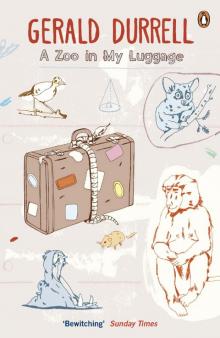 A Zoo in My Luggage
A Zoo in My Luggage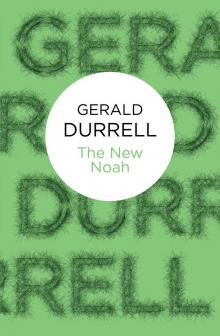 The New Noah
The New Noah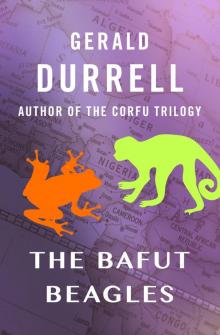 The Bafut Beagles
The Bafut Beagles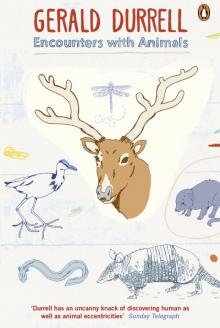 Encounters With Animals
Encounters With Animals Catch Me a Colobus
Catch Me a Colobus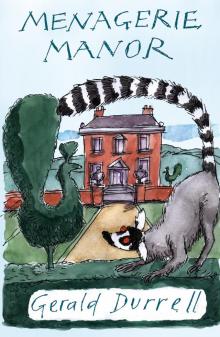 Menagerie Manor
Menagerie Manor The Picnic and Suchlike Pandemonium
The Picnic and Suchlike Pandemonium Ark on the Move
Ark on the Move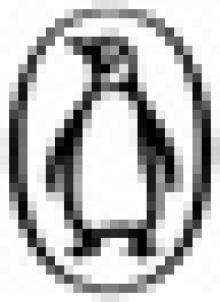 My Family and Other Animals
My Family and Other Animals Two in the Bush (Bello)
Two in the Bush (Bello)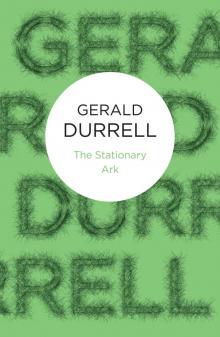 The Stationary Ark
The Stationary Ark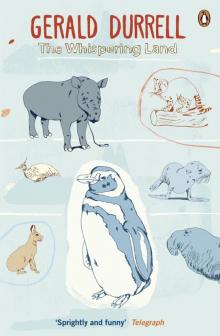 The Whispering Land
The Whispering Land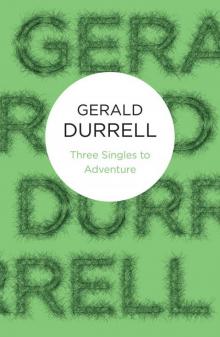 Three Singles to Adventure
Three Singles to Adventure Fillets of Plaice
Fillets of Plaice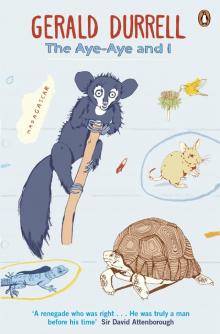 The Aye-Aye and I
The Aye-Aye and I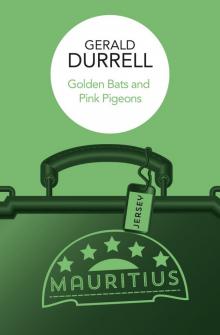 Golden Bats & Pink Pigeons
Golden Bats & Pink Pigeons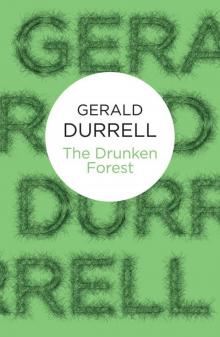 The Drunken Forest
The Drunken Forest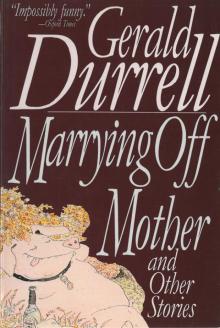 Marrying Off Mother: And Other Stories
Marrying Off Mother: And Other Stories The Corfu Trilogy (the corfu trilogy)
The Corfu Trilogy (the corfu trilogy) The Corfu Trilogy
The Corfu Trilogy Marrying Off Mother
Marrying Off Mother Two in the Bush
Two in the Bush